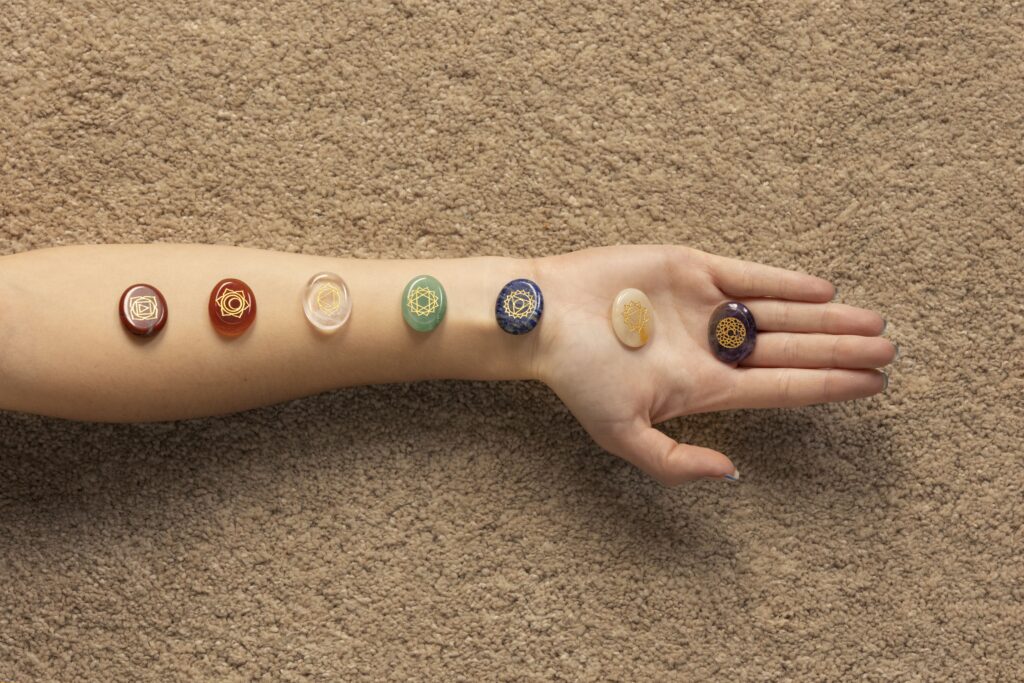
Here’s a hard truth:
Your ability to manifest what you want—love, money, peace, success—isn’t determined by how often you visualize, journal, or repeat affirmations.
It’s determined by your capacity to receive and hold what you desire. And that capacity is wired into your attachment style.
Let’s break it down: what each style really stands for, how it shows up in real life, how it affects your energetic field and manifestation power—and most importantly, how to work with it, not against it.
What Are Attachment Styles?
Attachment styles are emotional survival strategies we developed in early childhood—based on how safe or unsafe we felt in our primary relationships (especially with caregivers).
These styles shape our:
- Core beliefs about self-worth
- How we relate to love, success, abundance
- Our nervous system’s default frequency
And because manifestation is less about thoughts and more about vibration, your attachment style plays a critical role in what you attract, resist, or sabotage.
Let’s decode them one by one.
The Four Attachment Styles & Their Manifestation Blueprints
1. Anxious Attachment
“If I don’t try hard enough, I’ll be forgotten.”
What It Stands For:
A deep fear of abandonment, a belief that love and security must be earned. As children, these individuals received inconsistent care—sometimes warm, sometimes withdrawn. They learned to hyper-attune to others and over-function to stay emotionally safe.
How They Show Up:
- Overthinkers, overgivers, overdoers
- Constantly seeking validation or signs
- Tend to obsess over manifestation rituals, trying to “earn” outcomes
- Often feel that “it’s almost coming… but never quite arrives”
How This Affects Manifestation:
- The frequency becomes lack and desperation
- The body says: “I want it,” but the subconscious says: “I don’t deserve it unless I prove myself.”
- They may manifest breadcrumbs of desires but never fully hold them
Empowering Actionables:
- Practice neutral receiving: Let someone give without rushing to give back.
- Regulate urgency: Learn to sit with discomfort instead of fixing.
- Core mantra: “I don’t chase what’s already aligned with me.”
2. Avoidant Attachment
“I’m good on my own. I don’t want to need anything—or anyone.”
What It Stands For:
A core fear of dependence and loss of control. As kids, they were emotionally neglected, dismissed, or taught that vulnerability = weakness. They survive by self-reliance.
How They Show Up:
- Emotionally distant, even from their own desires
- Highly intellectual, dismiss feelings as “messy”
- Manifestation feels “too woo” or “too much”
- Often don’t know what they want—or feel overwhelmed when they get it
How This Affects Manifestation:
- They block desires at the receiving stage
- “I want it, but I don’t want to need it” creates energetic repulsion
- They disconnect from joy, which is the key to attracting abundance
Empowering Actionables:
- Connect with the body: Use somatic work to reconnect with desire
- Journal prompt: “What do I fear losing if I let life support me?”
- Mantra: “Letting in help is not weakness. It’s healing.”
3. Disorganized (Fearful-Avoidant) Attachment
“I crave love, but I don’t trust it. I want abundance, but I don’t feel safe with it.”
What It Stands For:
This style is rooted in trauma. As kids, they experienced caregivers as both a source of love and fear. This creates chaotic inner wiring—where closeness = risk.
How They Show Up:
- Intense, passionate manifestors—but filled with inner conflict
- May manifest something and then sabotage it immediately
- Live in a push-pull with their dreams (“I want it, I fear it”)
- Deep mistrust in people, systems, or the universe
How This Affects Manifestation:
- Nervous system sees desires as dangerous
- Joy becomes triggering. “If it’s this good, the fall will be worse.”
- Subconscious belief: “Good things don’t last.”
Empowering Actionables:
- Nervous system safety first: Use breathwork, EFT, or TRE to discharge stored fear
- Daily ritual: Ask, “What would make me feel 2% safer to receive today?”
- Mantra: “It’s safe to receive. It’s safe to keep. It’s safe to enjoy.”
4. Secure Attachment
“I trust life. I trust myself. I trust the timing.”
What It Stands For:
A foundation of safety. These individuals grew up with caregivers who were attuned, responsive, and emotionally available. They know how to self-soothe and ask for help.
How They Show Up:
- Emotionally balanced manifestors
- Can desire without urgency, visualize without clinging
- Know when to take action—and when to rest
- Resilient in the face of delays or “no”
How This Affects Manifestation:
- Clear signal, stable frequency = faster alignment
- Receive easily and hold it without fear
- Don’t over-identify with their desires → no attachment = manifestation power
Empowering Actionables (to move into secure):
- Self-reparenting: Show up for yourself the way you wished someone had
- Embodiment practices: Dance, meditate, breathe into your desires
- Mantra: “I attract with ease because I trust what’s meant is already mine.”
The Breakthrough Truth
You don’t manifest from the mind. You manifest from the body.
If your nervous system isn’t on board, your affirmations are just noise.
If your attachment wounds scream “unsafe,” your desires won’t land.
You must create an inner environment that feels safe to have what you want.
That’s why manifestation is really healing in disguise.
Practical Tools to Rewire Your Attachment Style for Manifestation
- The 5-Minute “Safe to Receive” Meditation
Sit still. Breathe deeply. Repeat:
“It’s safe to have what I desire. I am not in danger. I am not losing myself. I am held.” - Trigger Journal
Every time you feel discomfort with receiving (compliment, money, love), write:
- What did I feel?
- What was I afraid would happen?
- Whose voice is this originally?
- What did I feel?
- Somatic Anchoring Ritual (Daily)
Visualize your desire, then place your hands on your heart and belly.
Ask your body: “What do you need to feel safe enough to let this in?”
This builds attachment security from the inside out.
Final Words:
Healing your attachment style is the most overlooked manifestation hack of the decade.
This is not about becoming someone new.
It’s about becoming safe enough to stop pushing away what you already deserve.
The universe isn’t ignoring you.
It’s just waiting for you to feel safe enough to receive it.






















